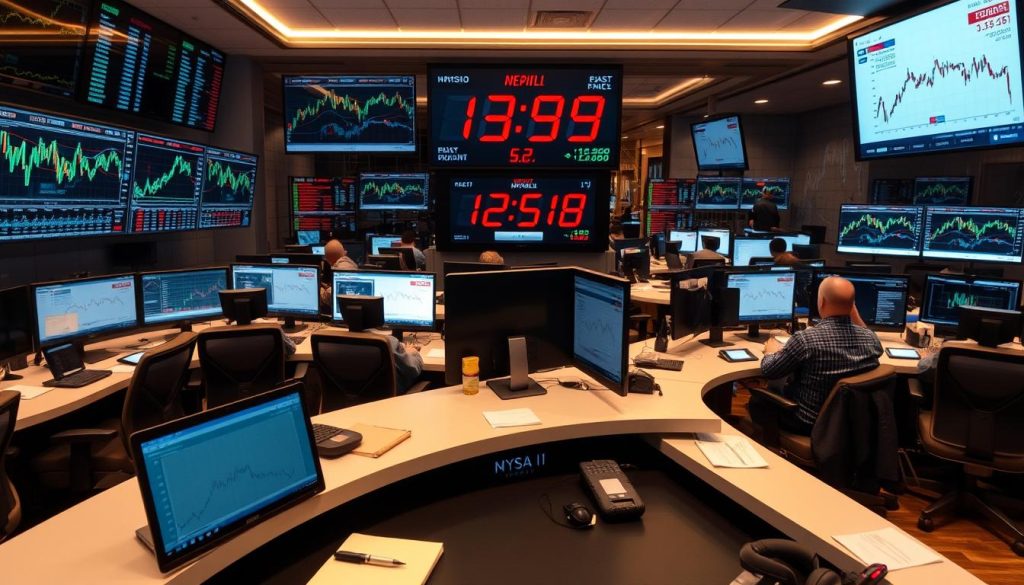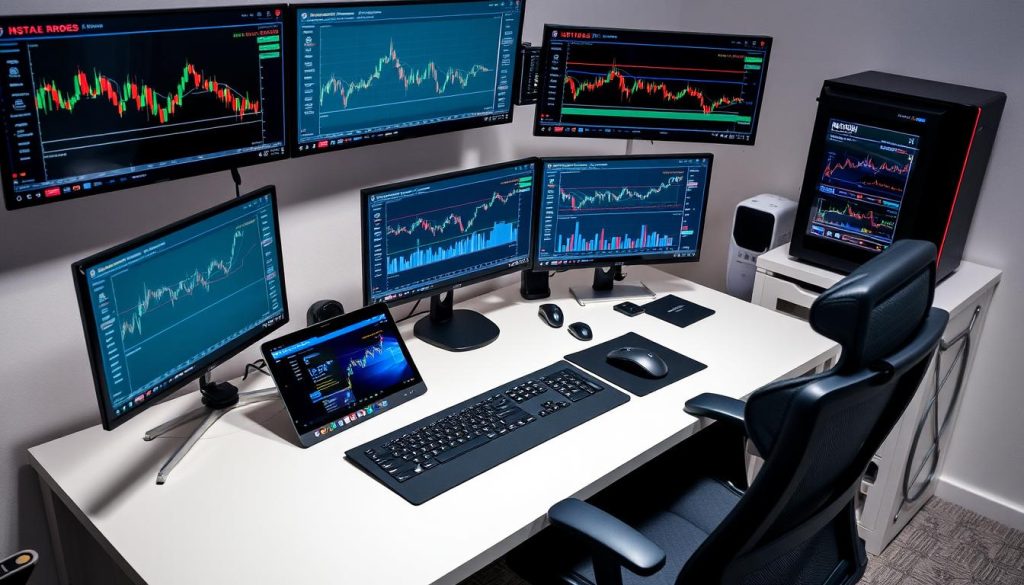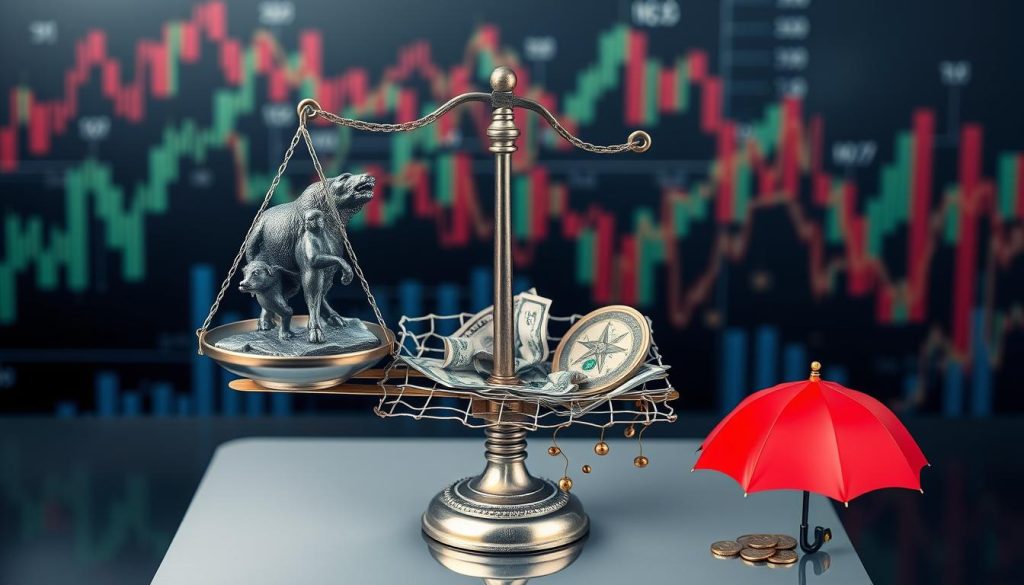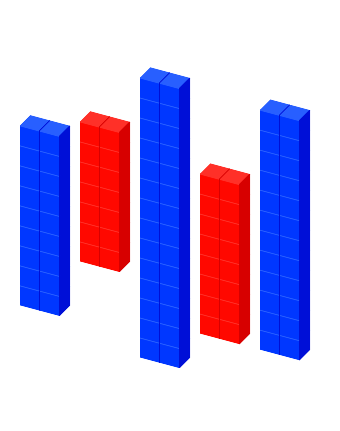How to Prepare for a Prop Firm Evaluation
Entering the world of prop firm challenges can seem overwhelming. But, with the right preparation, you can boost your chances of success. Prop firm evaluations are key to getting funded trading accounts. This can be a big step for those who want to trade.
In this guide, we’ll cover the key steps to get ready for a prop firm evaluation. We’ll talk about understanding the evaluation process, creating a strong trading strategy, and managing your mindset.

Key Takeaways
- Understand the prop firm evaluation process and its requirements
- Develop a robust trading strategy with a focus on risk management
- Prepare your trading equipment and setup for optimal performance
- Cultivate a disciplined mindset and manage stress effectively
- Leverage educational resources and community support for continuous improvement
Understanding Prop Firm Evaluations and Their Requirements
Entering the world of prop firm evaluations can be tough for new traders. These tests open doors to big trading chances but have their own rules and limits. Knowing the different models, rules, and what account sizes are expected is key to doing well.
Different Types of Evaluation Models
Prop firms use different ways to check a trader’s skills and potential. Some common methods are:
- Live trading evaluations, where traders show their skills in real-time market conditions.
- Simulated trading evaluations, which let traders show their skills in a virtual trading space.
- Hybrid models that mix live and simulated trading for a full assessment.
Common Rules and Restrictions
Prop firms have rules and limits for the evaluation process. These can include:
- Trading restrictions: Rules on what types of instruments, market sectors, or strategies can be used.
- Position sizing guidelines: Rules for managing trade sizes and capital allocation.
- Drawdown limits: Maximum losses allowed before the evaluation ends.
Account Sizes and Profit Targets
Prop firm evaluations often use set account sizes, from a few thousand to hundreds of thousands of dollars. Traders must hit specific profit targets within a time frame to pass the evaluation and get a funded trading account.
“Understanding the nuances of prop firm evaluations is crucial for traders looking to leverage their skills and access larger trading capital.”
By learning about the different evaluation models, rules, and account sizes, traders can get ready for the challenges ahead. This helps increase their chances of success in the prop firm evaluation process.
Essential Trading Equipment and Setup
Getting ready for a prop firm evaluation means you need the right gear. The equipment you pick can greatly affect your trading skills and how you do in the evaluation. This includes your hardware, software, internet, and trading platform.
For trading hardware, a strong and reliable computer is key. It should have a fast processor, lots of RAM, and a solid-state drive (SSD) for quick data access. Also, having a dual-monitor setup can help you work more efficiently and analyze better.
When it comes to trading software, look for platforms with great charting, analysis, and order execution tools. MetaTrader, TradingView, and NinjaTrader are popular choices. Make sure you know how to use the software well to get the most out of it.
A fast and stable high-speed internet connection is crucial for smooth trading. Choose a plan with low latency and no downtime. Any issues can hurt your performance during the evaluation.
For the trading platform, pick one that fits the prop firm’s needs. Look at how fast orders are executed, how accurate trades are, and how easy it is to use. This ensures a smooth and efficient trading experience.
- Invest in a powerful, high-performance computer with an SSD and dual-monitor setup.
- Utilize professional-grade trading software with robust charting, analysis, and order execution capabilities.
- Secure a reliable, high-speed internet connection to maintain consistent trading performance.
- Select a trading platform that aligns with the prop firm’s evaluation requirements and provides a seamless user experience.

“Having the right trading equipment and setup can make all the difference in your prop firm evaluation. Invest in the best tools to showcase your trading skills and increase your chances of success.”
Developing a Solid Trading Strategy
Creating a strong trading strategy is key to success in prop firm evaluations. At the core of a good strategy are risk management, position sizing, and clear entry and exit rules. These elements help traders perform well and pass the evaluation.
Risk Management Principles
Good risk management is the base of any winning strategy. Prop firms focus on a trader’s skill in controlling risk. This includes setting stop-loss levels, diversifying, and using risk-to-reward ratios that meet the firm’s standards.
Position Sizing Guidelines
Position sizing is vital for a successful strategy. Prop firms check if traders use their capital wisely. They make sure position sizes match the trader’s account and risk level. Following these rules helps keep a balanced portfolio and control losses during the evaluation.
Entry and Exit Rules
Having clear entry and exit rules is crucial for steady trading. Prop firms look for traders who can spot good trades and manage them well. They use technical and fundamental analysis and stick to price targets and stop-loss levels.
| Trading Strategy Element | Key Considerations |
|---|---|
| Risk Management | Appropriate stop-loss levels Position diversification Risk-to-reward ratios |
| Position Sizing | Alignment with account size Risk tolerance guidelines Balanced portfolio allocation |
| Entry and Exit Rules | Technical and fundamental analysis Price target identification Stop-loss management |
By focusing on these key areas, traders can show their risk management skills, discipline, and flexibility. Mastering these basics can greatly improve their chances of passing the evaluation and joining a top prop firm.
How to Prepare for a Prop Firm Evaluation: A Pre-Assessment Checklist
Starting your journey to join a prop trading firm requires careful preparation. Before you start, do a deep self-assessment to show your trading skills. This checklist will help you prepare well for your evaluation preparation and prop firm readiness.
- Know the firm’s evaluation needs: Learn what the prop firm expects from you. This includes their rules and restrictions. Make sure you understand their goals to fit your strategy.
- Check your trading plan and risk control: Look at your trading strategy and how you manage risks. Focus on risk management principles, position sizing guidelines, and clear entry and exit rules. Find areas to improve and make changes.
- Make sure your trading setup works: Your computer, software, and internet should be reliable and fast. Test everything to avoid problems during the evaluation.
- Test your strategy with backtesting and demo trading: Try your strategy with backtesting and demo trading. See how it performs and find any weak spots to fix.
- Look at your trading psychology and discipline: Check how well you handle stress and stay focused. Work on improving your trading discipline and mental resilience.
- Review your past trading and performance: Study your past trades to see what you did well and what you could improve. Use this to make your strategy better and set achievable profit targets.
By using this detailed pre-assessment checklist, you’ll be ready for the evaluation preparation process. You’ll impress the prop firm with your prop firm readiness.
| Key Considerations | Recommended Actions |
|---|---|
| Evaluation Requirements | Thoroughly review and understand the firm’s specific criteria, rules, and restrictions. |
| Trading Strategy and Risk Management | Evaluate and refine your trading approach, focusing on risk management, position sizing, and entry/exit rules. |
| Trading Setup and Equipment | Ensure your trading setup is reliable and efficient, with thorough testing to avoid technical issues. |
| Backtesting and Demo Trading | Conduct extensive backtesting and demo trading to assess your strategy’s performance and identify areas for improvement. |
| Trading Psychology and Discipline | Evaluate and develop strategies to manage stress, emotions, and maintain focus during the evaluation. |
| Trading Performance Analysis | Thoroughly review your past trading records and performance data to fine-tune your approach and set realistic profit targets. |
Mastering Trading Psychology for Evaluations
Trading in a high-stakes world needs more than just technical skills. Understanding trading psychology is key to success. It helps you manage the psychological factors that affect your performance.
Managing Stress and Emotions
The evaluation process can be very stressful. To handle this, use stress management techniques like mindfulness and deep breathing. These help you stay calm and make better decisions.
Building Trading Discipline
Having trading discipline is crucial. Create a routine, stick to your risk plans, and control your emotions. This ensures your performance stays strong, even when under a lot of pressure.
Maintaining Focus During Challenges
Challenges will come during the evaluation. It’s important to stay focused. Use goal-setting, visualization, and positive self-talk to keep your mind on track. See challenges as chances to grow.
Mastering trading psychology sets you up for success in evaluations. Focus on managing stress, staying disciplined, and keeping your focus sharp. These strategies will help you face the evaluation with confidence.

Backtesting and Demo Trading Preparation
Getting ready for a prop firm evaluation means two key steps: backtesting your trading strategies and demo trading. These steps help you improve your approach and build confidence for the real test.
Backtesting uses past market data to check if your trading plans work. It shows how your strategies would have done before. This helps you make better choices and create a strong trading plan.
Demo trading lets you test your strategies in a safe space. It’s like a practice field for trading, where you can learn and get better without losing money. This practice is crucial for the high-pressure prop firm evaluation.
| Backtesting Strategies | Demo Trading Preparation |
|---|---|
| Analyze historical market data Test the profitability of your trading strategies Identify areas for improvement Refine your decision-making process | Simulate real-world trading conditions Experiment with your strategies without financial risk Refine your trading skills and techniques Build confidence in your approach |
Spending time on backtesting strategies and demo trading prepares you for the prop firm evaluation. You’ll understand historical data and be ready to adapt to market changes.

“Successful trading is about finding the perfect balance between risk and reward. Backtesting and demo trading are your keys to unlocking that balance.”
Understanding Market Conditions and Timing
Getting good at prop firm evaluations means knowing the market well. Traders need to find the best times to trade and handle market ups and downs. This helps them pass the evaluation.
Optimal Trading Hours
Timing is key in prop firm evaluations. Traders should know when the markets are busiest. This is when they can make the most money.
Trading during these busy times shows they can make smart choices. It also helps them make consistent profits.
Market Volatility Considerations
Prop firm evaluations happen when markets are very volatile. This can be tough but also a chance to shine. Traders need to know how to handle this volatility.
They must manage risks well and find ways to make money. Showing they can handle different market situations helps them pass the evaluation.
| Metric | Average Value | Peak Value | Impact on Prop Firm Evaluation |
|---|---|---|---|
| Volatility (VIX Index) | 15-20 | 30-40 | Increased volatility requires enhanced risk management and timing strategies to navigate successfully. |
| Trading Volume | 10-15 million contracts per day | 20-25 million contracts per day | Higher trading volume provides more opportunities for profitable trades but also increases the need for effective position sizing. |

Understanding market conditions and timing is crucial for success in prop firm evaluations. By mastering these areas, traders can stand out. This increases their chances of getting a prop firm account.
Risk Management Strategies for Evaluation Success
Entering the world of prop firm evaluations is a high-stakes game. It requires a strong focus on risk management. As a trader, learning key risk management techniques is crucial. It can make all the difference between success and failure.
Let’s look at strategies that help keep your capital safe. These methods can position you for victory.
Implementing Drawdown Limits
Drawdown limits are a fundamental risk management principle. They define the maximum loss you’re okay with before taking action. By setting a realistic limit, you avoid big losses from one bad trade.
This approach keeps you in control, even when markets are unpredictable. It helps you stay calm and focused.
Leveraging Stop-Loss Orders
Stop-loss strategies are vital for managing risk in prop firm evaluations. These orders close your position at a set price, capping your losses. By using stop-loss levels in your trading plan, you protect your capital.
This shows evaluators your skill in managing risk. It’s a key part of your evaluation success.
| Risk Management Technique | Description | Potential Benefit |
|---|---|---|
| Drawdown Limits | Setting a maximum loss threshold before taking corrective action | Preserves capital and prevents a single trade from derailing the evaluation |
| Stop-Loss Orders | Automatically closing positions when the market reaches a predetermined price | Limits potential losses and showcases disciplined risk management |
By using these risk management techniques, you can confidently handle prop firm evaluations. Evaluators look at your trading skills and risk management. Mastering these strategies is crucial for success.

“Successful trading is all about risk management. If you can’t handle the risk, you can’t handle the trade.”
Common Mistakes to Avoid During Evaluations
Entering the world of prop firm evaluations can be tough. Even seasoned traders can stumble into common traps. Overtrading and position sizing errors are two big issues that can mess up an evaluation.
Overtrading Pitfalls
One big mistake is overtrading. The urge to make more money can lead to too much trading. This can quickly eat away at profits and risk the evaluation’s success.
Overtrading not only ups the risk of losing money. It also shows a lack of discipline. Prop firms look for disciplined traders.
Position Sizing Errors
Getting position sizing right is key in prop firm evaluations. Traders who don’t manage risk well can face big problems. Taking on too big of a position can lead to huge losses.
These errors can block a trader from reaching the evaluation’s profit goals. To steer clear of these mistakes, traders need to grasp risk management and show strong trading discipline. With these skills, they can pass the evaluation and start a rewarding trading career.
“Successful trading is all about managing risk, not about making predictions.” – Larry Hite
| Common Evaluation Mistakes | Impact | Recommended Strategies |
|---|---|---|
| Overtrading | Increased risk of losses, lack of trading discipline | Develop a well-defined trading strategy with clear entry and exit rules |
| Position Sizing Errors | Devastating losses, failure to meet profit targets | Implement robust risk management principles, adhere to position sizing guidelines |
Recording and Analyzing Your Trading Performance
Starting your journey to evaluate prop firms? It’s key to record and analyze your trading well. Use performance tracking, trade journaling, and data analysis to find valuable insights. These will help you improve and reach your trading goals.
Cultivating the Habit of Trade Journaling
Make trade journaling a habit. Write down every trade, why you made it, and the outcome. This helps spot patterns and trends. It also helps you reflect and get better.
Leveraging Data Analysis for Optimal Performance
Use data analysis alongside your journal. Look at your trading data closely. Check win-loss ratios, trade duration, and profit-to-loss ratios. This will show you where to improve, helping you make better choices.
| Metric | Your Current Performance | Desired Target |
|---|---|---|
| Win-Loss Ratio | 55% | 60% |
| Average Trade Duration | 2 hours | 1.5 hours |
| Profit-to-Loss Ratio | 1.2:1 | 1.5:1 |
Keep an eye on your performance tracking. Improve your trade journaling and data analysis. This will help you do well in your prop firm evaluation.

“Mastering the art of performance tracking and analysis is the key to unlocking your true trading potential.”
Choosing the Right Prop Firm for Your Trading Style
Finding the right prop firm is key to success. Prop firms differ in how they evaluate traders, what they require, and how they match with trading styles. By researching and comparing, you can find the best fit for your goals and preferences.
Comparing Different Prop Firms
Comparing prop firms is a crucial step. Look into what each offers, such as:
- Evaluation requirements and trading rules
- Account sizing and profit targets
- Funding structures and profit-sharing agreements
- Educational resources and community support
- Reputation and track record of the firm
Reading Terms and Conditions
It’s important to read the terms and conditions carefully. This helps you understand:
- Evaluation process and success criteria
- Funding and withdrawal policies
- Restrictions on trading strategies and instruments
- Profit-sharing arrangements and commission structures
- Dispute resolution and termination clauses
By reviewing these details, you can make sure the firm fits your trading style compatibility and goals.
“Choosing the right prop firm is like finding the perfect dance partner – you want a seamless connection that allows you to perform at your best.”
Creating a Structured Evaluation Day Routine
Creating a well-organized trading routine is key to success in prop firm evaluations. A structured approach helps you perform better, stay focused, and avoid distractions. Let’s look at the steps to make an effective evaluation day routine.
Start your day with a thorough pre-market prep. This means checking market news, analyzing data, and planning your trading strategy. Make sure you know the market and your plan for the day.
- Do a deep dive into market analysis to find good trading chances.
- Check your trading plan and risk management to match the day’s goals.
- Get your trading station ready with all tools for a smooth day.
During trading, stay disciplined and focused. Stick to your entry and exit rules and watch your risk closely. Don’t change your strategy too much, as consistency is important.
- Trade with precision, keeping an eye on your risk and position size.
- Watch the market closely and adjust your strategy if needed.
- Check your performance often and tweak your approach if necessary.
End the day with a detailed post-market review. Look at your trades, find ways to get better, and note your key takeaways. This reflection helps now and in future evaluations.
- Go over your trading records, including trades, profits, and losses.
- Think about your decision-making and how to improve it.
- Make a plan to work on your weaknesses and areas for growth.
By following a trading routine, daily prep, and a structured evaluation day, you boost your chances of success. Keep practicing and always look for ways to get better to become a skilled prop trader.
Leveraging Educational Resources and Community Support
Getting ready for a prop firm evaluation is more than just improving your trading skills. You also need to use educational resources and join supportive communities. These tools are key for both new and experienced traders looking to succeed in prop firms.
Immerse Yourself in Trading Education
Trading education is essential for prop firm evaluation prep. Look into trading education like online courses, webinars, and training programs. These can teach you about trading strategies, risk management, and market analysis. This knowledge is crucial for doing well in the evaluation.
Connect with Prop Firm Communities
Being part of prop firm communities can really help. These online forums and groups are full of support, advice, and experiences from other traders. You can get help, advice, and learn from others who have gone through the evaluation.
Leverage Free Learning Resources
The internet has lots of free learning resources for prop firm prep. You can find blogs, YouTube channels, trading simulators, and webinars. These help you understand the prop firm world and improve your trading skills at your own pace.
| Resource Type | Examples |
|---|---|
| Online Courses | Udemy, Coursera, Skillshare |
| Trading Webinars | Warrior Trading, InvestorsUnderground, TradePro Academy |
| Trading Blogs | The Lazy Trader, FXStreet, The Finance Twins |
| Trading Communities | Reddit r/Forex, TradingView, StockTwits |
Using these educational resources and communities can boost your trading skills. It helps you understand prop firm evaluations better. This way, you can increase your chances of success in your prop firm journey.
Post-Evaluation Analysis and Improvement Strategies
Finishing a prop firm evaluation is just the start. The real value comes from analyzing and improving your trading. This step is key for ongoing performance review, strategy refinement, and continuous improvement.
Begin by looking over your trading logs and metrics. Find out what you did well and what needs work. This detailed performance review helps you improve your trading strategy and decisions.
- Think about how you made decisions during the evaluation. What influenced your trades? How can you make fewer mistakes?
- Check your risk management. Were your trade sizes right? Did you stick to your stop-loss and profit levels?
- Look at how you handled emotions and stayed focused. How did you manage stress during tough times?
With this analysis, you can create a plan to improve. Update your trading plan, make your entry and exit rules better, and improve risk management. Continuous improvement is crucial for mastering the prop firm evaluation and achieving long-term success.
| Key Factors for Post-Evaluation Improvement | Strategies for Continuous Refinement |
|---|---|
| Identify strengths and weaknesses Analyze decision-making processes Evaluate risk management practices Assess emotional control and discipline | Revise trading plan and strategies Refine entry and exit rules Enhance risk management protocols Develop targeted improvement plans |
“The journey of a thousand miles begins with a single step. Celebrate your progress, but never stop improving.”
By always looking to improve, you can boost your trading performance. Stay committed, learn from your mistakes, and keep refining your strategy to reach your goals.
Conclusion
Throughout this guide, you’ve learned that prop firm success needs careful planning and a smart approach to evaluations. You now know about different evaluation models and the rules that come with them. You also have a solid trading strategy in place.
Getting the right trading tools and understanding trading psychology are key. Backtesting and demo trading are also crucial. Staying up-to-date with market trends and managing risks well can help you succeed.
Remember, success in prop firm trading comes from a growth mindset. Always work on improving your skills and stay committed to your goals. By using the strategies from this guide, you’re on the path to a successful trading career.
FAQ
What are the different types of prop firm evaluation models?
Prop firms use many evaluation models. Each has its own rules. Knowing these differences is key for traders to get ready.
What are the common rules and restrictions imposed by prop firms during evaluations?
Prop firms have rules for evaluations. These include limits on how much you can trade and how much you can lose. It’s important to know these rules to succeed.
What are the typical account sizes and profit targets set by prop firms?
Account sizes and profit targets vary by firm. Traders need to know these to plan their trading strategy. This affects how they trade during the evaluation.
What essential trading equipment and setup is recommended for prop firm evaluations?
For prop firm evaluations, you need good equipment. This includes fast computers, stable internet, and a strong trading platform. A good setup helps you trade well.
What are the key principles of risk management that should be applied during prop firm evaluations?
Risk management is crucial for success. Traders should use proper position sizing and strict stop-loss strategies. This helps keep their capital safe during the evaluation.
How can traders prepare a pre-assessment checklist to ensure they are ready for a prop firm evaluation?
Creating a checklist helps traders get ready. It should cover equipment, strategies, risk management, and overcoming challenges. This ensures they are well-prepared.
What are some common mistakes traders should avoid during prop firm evaluations?
Traders should avoid overtrading and sizing errors. They should also manage risk well and trade emotionally. Avoiding these mistakes increases their chances of passing.
How can traders effectively record and analyze their trading performance during prop firm evaluations?
Recording and analyzing performance is key. Traders should keep detailed journals and use data analysis. This helps them improve their trading.
What factors should traders consider when choosing the right prop firm for their trading style?
Choosing the right prop firm is important. Traders should look at evaluation models, rules, account sizes, and if they fit their trading style. Researching different firms helps make a good choice.
How can traders create a structured routine for their evaluation day to optimize performance?
Having a routine for evaluation days is helpful. It includes preparation, disciplined trading, and review. A good routine keeps traders focused and makes better decisions.
What educational resources and community support are available to help traders prepare for prop firm evaluations?
Many resources and support are available. This includes online courses, webinars, forums, and mentorship. These help traders learn and improve their chances of success.
How can traders conduct a thorough post-evaluation analysis and develop effective improvement strategies?
After an evaluation, traders should review their performance. They should analyze data, identify areas for improvement, and plan strategies. This helps them get better for future evaluations.
